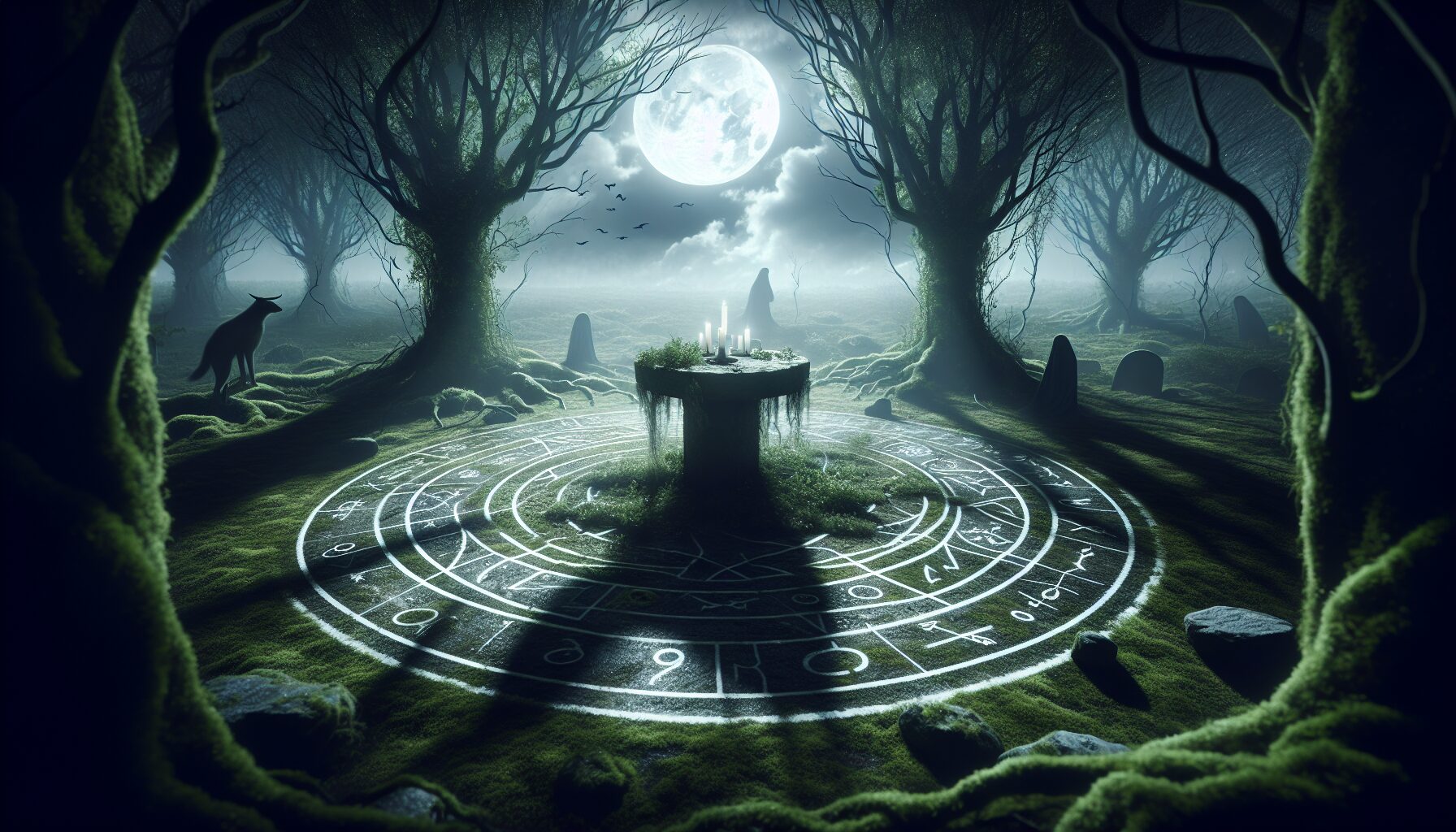In the silent embrace of night, a veil lifts to reveal a realm of introspection and mystery. For millennia, humans have cultivated rituals that engage the darkness, seeking illumination within the shadows. Enter the fascinating world of night rituals, where shadowed awareness emerges as both an art and science.
The Historical Roots of Night Rituals
Since the dawn of civilization, night has been considered a time for reflection and spirituality. Ancient tribes all over the world used the cover of darkness to delve deeper into their consciousness and the mysteries of life.
“The Celts, for instance, situated many of their spiritual activities during the night, believing the veil between worlds was thinnest then,” notes historian Dr. Maeve O’Connor in her analysis of ancient European religious practices (History.com).
Night rituals often included fire-based activities, chants, and meditation, all aimed at connecting individuals with the divine or understanding the human psyche more deeply.
Modern Interpretations of Night Rituals
In today’s world, night rituals have evolved, but the core remains surprisingly consistent. Contemporary practices blend ancient traditions with modern insights into the mind and spirit. Let’s explore some practices that can enrich one’s understanding of shadowed awareness through night rituals.
Meditative Reflection
- Engage in guided meditation, focusing on embracing darkness as a space of safety rather than fear.
- Use candlelight to enhance focus, allowing the mind to drift between light and shadow, echoing Carl Jung’s words: “Knowing your own darkness is the best method for dealing with the darknesses of other people.”
- Capitalize on the quietude of night to center your thoughts and reflect on the day’s events without distraction.
Dream Journaling
One of the simplest yet most profound night rituals involves recording dreams upon waking from sleep. Dreams are natural doorways to the subconscious, and night-time offers a unique opportunity to access this aspect of ourselves.
- Keep a journal by your bedside. Write down any dreams immediately upon waking — a practice echoed by psychoanalyst Sigmund Freud’s assertion that “dreams are the royal road to the unconscious.”
- Identify themes within your dreams. Consider how these might relate to your current life circumstances.
Moonlit Nature Walks
Engaging with nature at night provides an unparalleled connection to the universe. The quiet beauty of a moonlit landscape can be both humbling and awe-inspiring.
- Choose safe, familiar routes for moonlit strolls, ensuring you remain mindful of your surroundings.
- Notice the differences of the nocturnal world — the shift in sounds, the introspective solitude, the play of shadows — all providing insight into your own hidden depths.
Ritualistic Arts
Art speaks where words are unable to explain. Use nocturnal quietude as a backdrop for creativity. The unrestricted expression can often unlock shadowed awareness like nothing else.
- Painting or drawing using only shades of black, white, and gray to explore contrasts and balance, mimicking the dichotomies of night and day.
- Write poetry or prose inspired by nocturnal musings, capturing the fluid nature of darkness and insight.
Cultural Variations and the Embrace of Night
Every culture has its unique approach to night rituals. In Japan, tsukimi or moon-viewing, is a time-honored tradition where people gather to admire the moon, often incorporating poetry readings and quiet reflection.
In the bustling cities of India, lamps are lit during Diwali, the festival of lights, which celebrates the triumph of light over darkness, knowledge over ignorance.
As National Geographic describes, “During Diwali, the night becomes a canvas of flickering lights, each flame a promise of spiritual enlightenment and awakening” (National Geographic).
The Science Behind Night-Time Awareness
Recent studies emphasize the night’s impact on the human psyche. According to neuroscientists, darkness naturally encourages deeper, more meditative states of consciousness (Psychology Today). The reduction of visual stimuli at night lessens mental distractions, fostering a state where thoughts can roam more freely.
The Impact of Melatonin
As night falls, the body releases melatonin, a hormone that facilitates sleep but also encourages a state of mental tranquility conducive to reflection and creativity.
- Utilize this natural state by meditating or engaging in a quiet activity, leveraging the body’s chemistry to explore deeper facets of the self.
Embracing the Ritual of Night
In the frenetic pace of modern life, night rituals offer a sanctuary, a doorway to enhanced awareness through the symbiotic relationship of darkness and light. The shadowed awareness cultivated through these practices doesn’t just reveal our personal mysteries—it realigns us with the universe itself.
Consider the night not as a time of mere rest but as an opportunity for enriching and nurturing one’s spirit. Whether through mindful meditation, creative expression, or simply taking a moment to listen to the night, the rituals of night invite us into a world where “the shadow proves the sunshine” (Switchfoot).
As every shadowed night folds into another dawn, the knowledge and insights you gain from these practices can be carried into your day, informing, guiding, and enriching your wakeful journey in profound and unexpected ways.

Comments